Writing is a form of transmitting information through textual media using a set of signs and symbols which is known as the writing system. Throughout history, writing has been a mode of communication which probably resulted from the consequence of political expansion. According to H.G. Wells, writing has the ability to "put agreements, laws, commandments on record. It made the growth of states larger than the old city states possible. It made a continuous historical consciousness possible. The command of the priest or king and his seal could go far beyond his sight and voice and could survive his death".
Today, we are more adept to communicate one another through the use of internet, cellphones, telephone, etc. We convey our “written” messages through social media and/or emails. If we need a concrete copy, we may be able to print the message with ease. However, we still employ the original concept of writing using pen and paper. Today, we utilize different types and designs of pen depending on the material or project we work for. But one of a pen’s characteristics is having an ink, whatever type it may be.
Before ballpoint pens (pens we commonly use today) came into being, the famous fountain pen was marketed. Maybe your parents and grandparents know about how beautiful these pens are. Its difference to ballpoint pen is that its a nib pen that contains an internal reservoir of water-based liquid ink. It draws ink from the reservoir through a feed to the nib and deposits it on paper via a combination of gravity and capillary action. Filling the reservoir with ink may be achieved manually or via an internal filling mechanism which creates suction to transfer ink directly through the nib into the reservoir. Some pens employ removable reservoirs in the form of pre-filled ink cartridges. A fountain pen needs little or no pressure to write.
 |
The PARKER 51 fountain pen with the marketing slogan:
"Writes dry with wet ink!" |
Today, fountain pens are often treated as luxury goods and sometimes as status symbols because they are expensive. Fountain pens may serve as an everyday writing instrument also much like the common ballpoint pen. Good quality steel and gold pens are available inexpensively today, particularly in Europe and China, where there are "disposable" fountain pens. such as the Pilot Varsity. In France, in particular, the use of fountain pens is well spread.
Fountain pens ink
Because fountain pens operate on the principle of capillary action, ink for them is almost exclusively dye-based. Pigment-based inks (which contain solid pigment particles in a liquid suspension) tend to clog the narrow passages of the pens. Some pigmented inks do exist for fountain pens, but these are uncommon. India ink, a carbon pigment-based ink, also contains a binder (such as shellac), which can quickly clog such pens. The ideal fountain pen ink is free-flowing, free of sediment, and non-corrosive. These qualities may be compromised in the interests of permanence, manufacturability, and in order to use some widely available dyes.
A form of ink that pre–dates fountain pens by centuries is Iron gall ink. This blue–black ink is made from iron salts and tannic acids from vegetable sources. It was used in fountain pens when they were invented, but has the disadvantage of causing corrosion to metal parts. Modern formulations of Iron gall ink are somewhat less corrosive and are still occasionally used in applications that require permanence.
Red inks usually contain the dye, Eosin. Blue inks often contain Triarylmethane dye. In addition to water, the non-dye components (collectively referred to as the vehicle) might include, polymeric resins, humectants to retard premature drying, pH modifiers, anti-foaming agents and biocides, to prevent fungal and bacterial growth, and wetting agents (surfactants). Surfactants reduce the surface tension of the ink – distilled water has a surface tension of 72 dyn/cm (72 × 10−3 N/m) but the desirable value for ink is between 38 and 45 dyn/cm (38 to 45 × 10−3 N/m). If the ink's surface tension was too high, then it would not flow through the pen; if it was too low, then the ink would run out of the pen with less control.
Filipino: part of fountain pen’s ink development
But do you know that a Filipino was a part of the fountain pens development? Francisco Quisumbing is a Filipino chemist known for being the inventor of Quink ink used by The Parker Pen Company. He graduated from the University of Chicago under the American pensionado program. He went back to the Philippines after World War II but was unable to organize the Philippine Ink Corporation under the Japanese Reparations Program because of too much government intervention. Quink stands for Quisumbing Ink. However, Parker states that the name is an amalgam of "quick and ink".
The Quink
Quink was first marketed in 1931. The resulting product was strongly alkaline and contained isopropyl alcohol, a solvent not previously used in inks. At that time, most pen barrels and caps were manufactured using pyralin, which was often damaged by the alcohol contained in Quink. This problem eventually led to the development of the successful fountain pen, the Parker 51. A common misconception about Quink is that it was intended to be the ideal ink for the Parker 51, which generated over 400 million dollars in sales during its thirty-year history. The Parker 51 pen was the only pen of the time capable of using Quink effectively. However, the Parker 51 was only made available in 1941, ten years after Quink's development. Quink features the following useful characteristics that made it a successful ink for fountain pens:
- it resisted water
- it did not clog
- it had the desired quality of ink flow
- it resisted moulding
- it was non-corrosive
- it did not leave deposits
- it did not fade
- it was quick-drying
 |
| Parker's Quink ink bottle |
Quink was manufactured in four colors: India Black, Pan American Green, China Red and the famous Tunis Blue. It was sold in bottles made by the Armstrong Cork Company, Lancaster, PA. The bottles were designed with a low centre of gravity to prevent tipping. The ink was to have several improvements over the years; an even quicker-drying product appeared in 1939 called "Double Quink." It included a further refinement in the addition of the chemical SOLV-X which dissolved sediment and cleaned the pen when writing.
In 1941, when the Parker 51 was launched, Double Quink was renamed and repackaged as "Parker 51 ink" for marketing purposes. Parker's ink sales became the key to maintaining the company's profitability. Further enhancements were made to Parker inks and the company subsequently introduced "Superchrome" ink, proclaimed as revolutionary by the manufacturer. "Superchrome" ink was marketed in 1947 after a seventeen-year research period that cost over USD$200,000. Parker marketed the product as the "first basic ink improvement in over 250 years" that offered near-instant drying, greater "brilliance" (or brightness) and availability in a wider selection of colors. Regular Quink is not waterproof, unlike India ink. If paper that has been written on becomes wet, black ink will run and separate into blue and yellow components.
The Quink today
Quink remains a popular ink product and was described as a "great all around ink" in an online fountain pen ink review. According to fountain pen enthusiasts, Parker Quink is generally considered to be "safe fountain pen ink"; this means that it should not stain or clog fountain pens very easily.
The use of fountain pens gradually decreased during the second half of the twentieth century. Consequently, Parker 51 ink was phased out in the United Kingdom (UK) in 1972 and the US in 1978. However, a large worldwide network of collectors and enthusiasts continue to use the Parker 51 pen in the twenty-first century, with a limited edition of the model (available in two colors, "Vista Blue" and black) released by Parker in 2002. As part of the 2002 product revival, Parker promoted its quick-drying ink as the ideal accompaniment for the Parker 51.




![[Appreciation Gifts 2023] KSG set - Double Pen SET - Parker IM Rollerball & Ballpoint Pen - [Various Colours] - KSGILLS.com | The Writing Instruments Expert](http://ksgills.com/cdn/shop/files/WhatsAppImage2023-08-19at3.14.43PM.jpg?v=1764419608&width=900)
![[Appreciation Gifts 2024] KSG set - Double Pen SET - Parker IM Rollerball & Ballpoint Pen - [Various Colours] - KSGILLS.com | The Writing Instruments Expert](http://ksgills.com/cdn/shop/files/ksgills-fathers-day-gift-set.png?v=1764419608&width=1000)
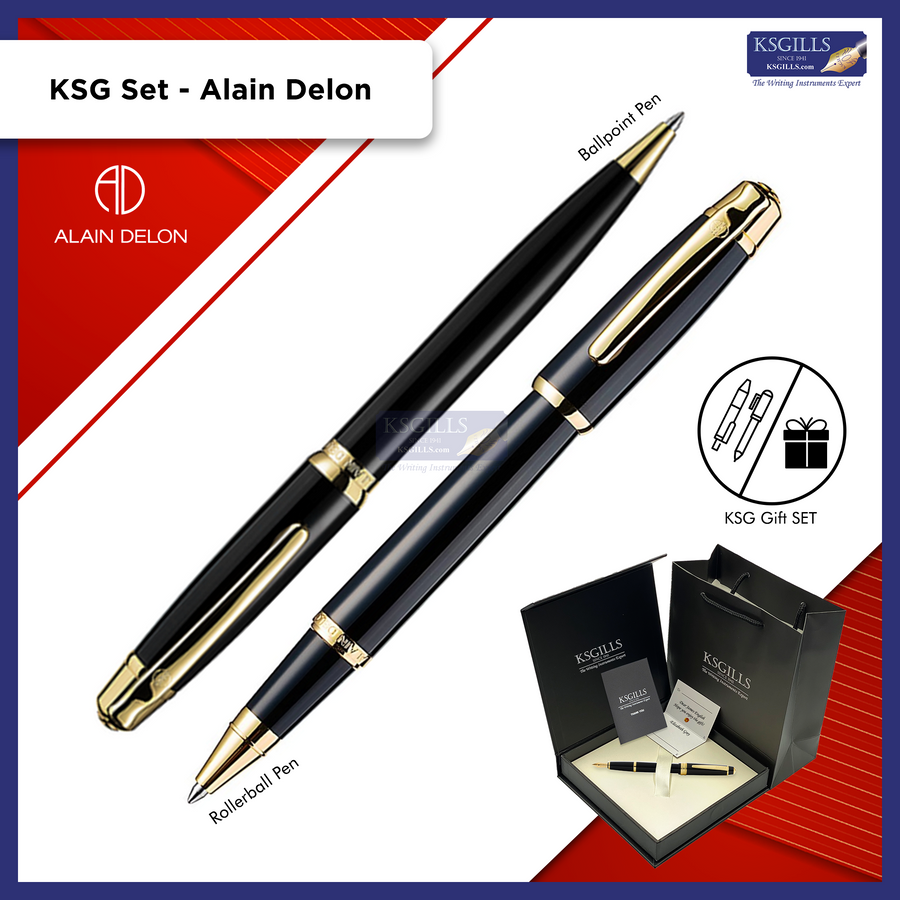
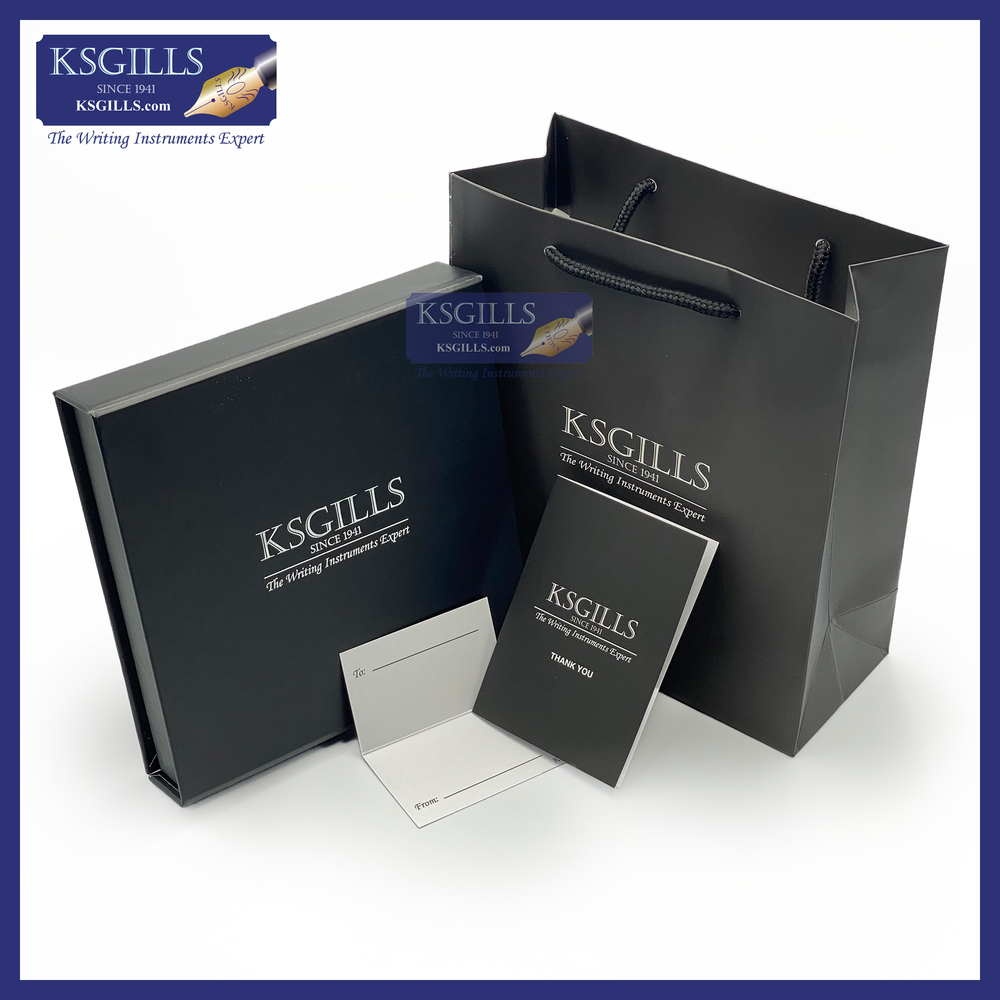

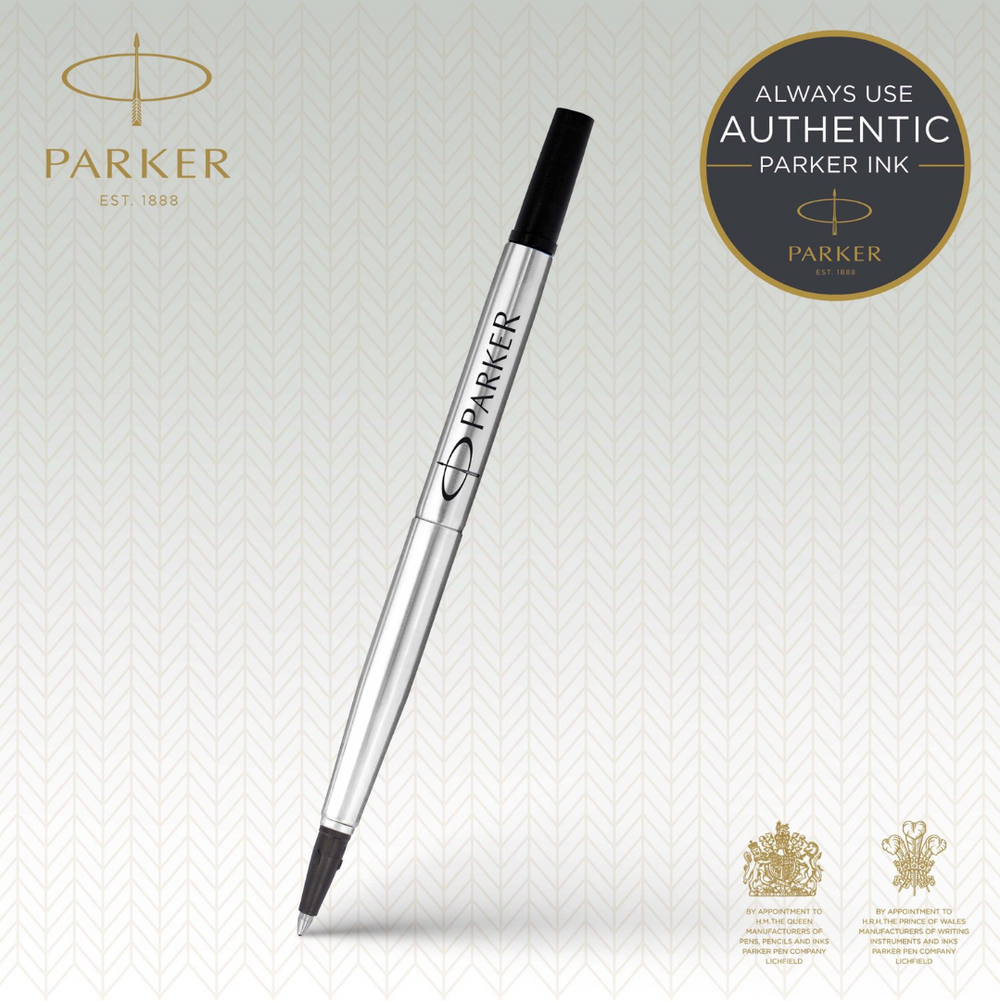
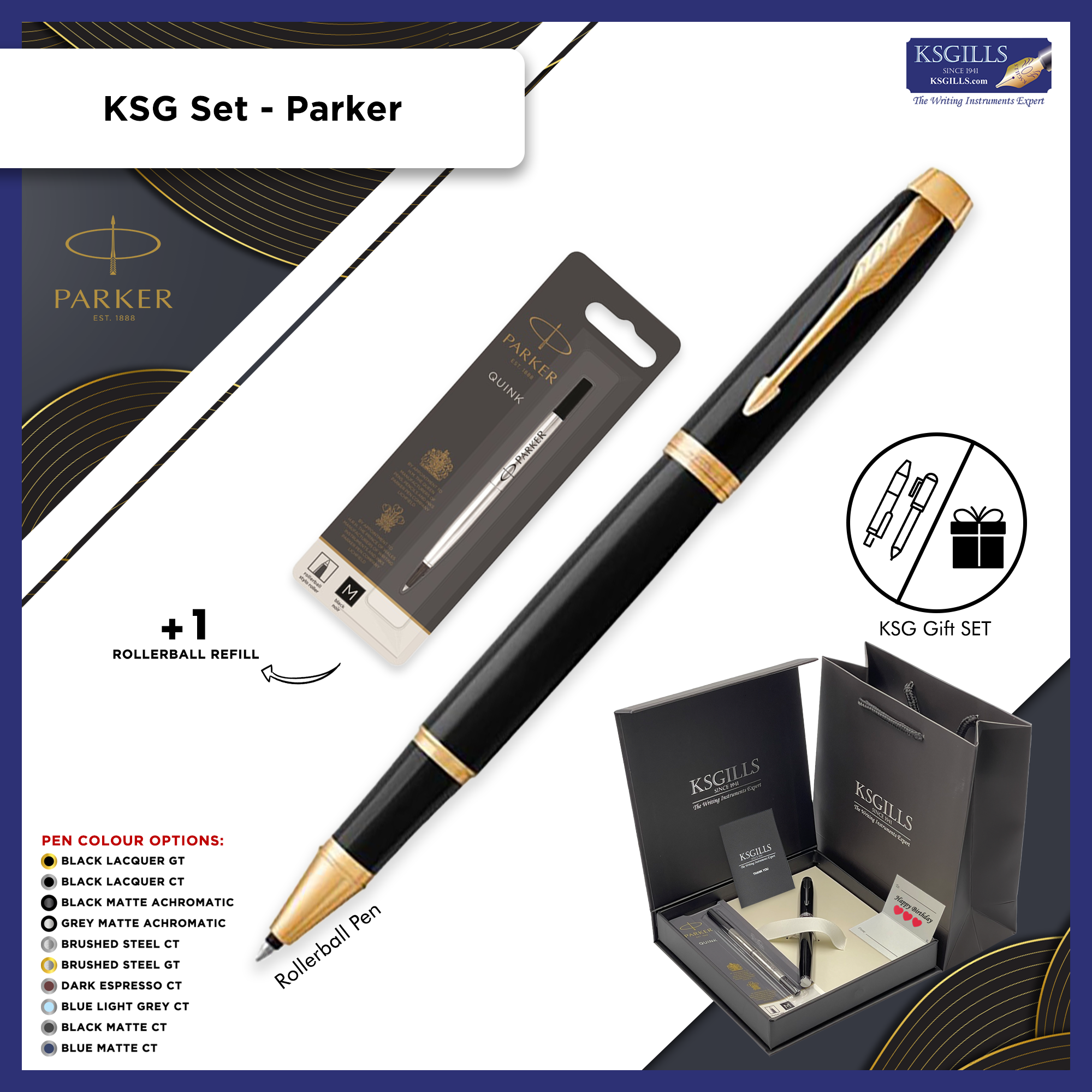
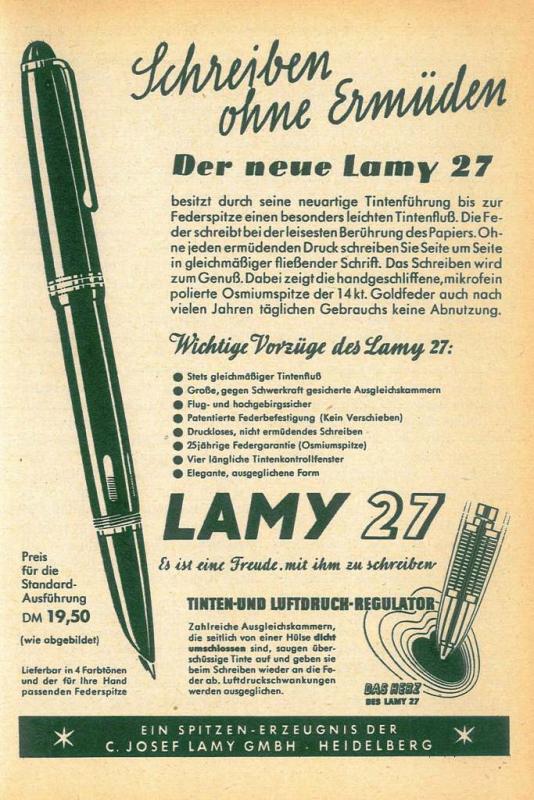

![KSG set - Double Pen SET - Parker IM Fountain & Ballpoint Pen - [Various Colours] - KSGILLS.com | The Writing Instruments Expert](http://ksgills.com/cdn/shop/products/THUMBAIL_KSGGiftSet-ParkerIM-BlackGold-FP_BP-Main.png?v=1659158551&width=900)
![KSG set - Double Pen SET - Parker IM Fountain & Ballpoint Pen - [Various Colours] - KSGILLS.com | The Writing Instruments Expert](http://ksgills.com/cdn/shop/products/BlackGold.png?v=1693741987&width=1000)
Hi I was just wondering if you can use the PARKER QUINK x 5 pack cartridges for tattoo usage?
Thank you.
I have used blue Quink in water color art. It has unusual diffusing qualities.
I have just ordered the Black Quink, and trust this will also disperse like the Blue.
Leave a comment